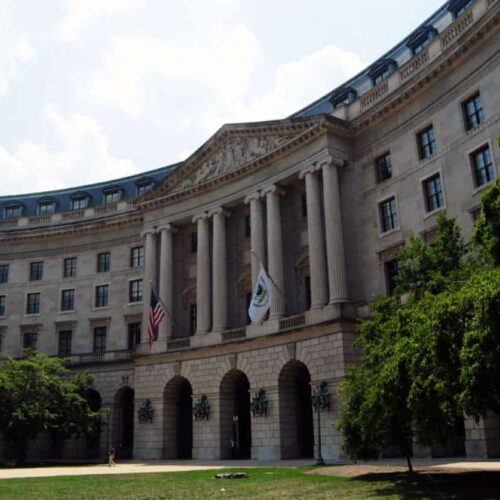Introduction
This spreadsheet contains the names and locations of 464 facilities on the U.S. Environmental Protection Agency’s internal Clean Air Act “watch list.” The list includes serious or chronic violators of the act that have faced no formal enforcement action for many months. Until now, the list has not been made public.
The list helps the EPA identify “recidivist and chronically noncomplying facilities whose violations have not been formally addressed by either the state or the EPA,” as the agency put it in a 2008 report. The EPA’s inspector general in 2007 put it similarly: The list “tracks facilities with serious or chronic noncompliance that have not received formal enforcement action.”
Polluters on the list may have violated any of a number of rules. They might, for example, have failed to adhere to a state or federal order, or to obtain a permit. Emissions of hazardous pollutants may have been too high. The full list of criteria can be viewed here.
The EPA has kept the document under wraps out of concern that it would be viewed as a “most-wanted list,” said Richard Alonso, a former top Clean Air Act enforcement official at the EPA who now represents corporations. State officials don’t like the list because it can make them look like laggards.
The Center for Public Integrity’s iWatch News and NPR obtained the July and September versions of the Clean Air Act watch list through a Freedom of Information Act request.
Not every facility on the list may be a serious or chronic offender. Facilities may appear for other reasons, EPA spokesman Larry Jackson said. For instance, enforcement officials may be tracking a polluter’s compliance with a court order. A company in negotiations with authorities might be on the list. In other instances, violations may have been alleged but not proven. There also may be data errors — for example, a state agency’s failure to report an enforcement action to the EPA.
Meanwhile, the EPA acknowledged that the list may exclude facilities that deserve to be on it — “particularly if violation data has not been reported properly by the state,” it said in a fact sheet prepared for iWatch News and NPR. And all but 5 percent of the facilities on the latest version of the watch list, dated September, were classified as “high priority violators” — sites regulators believe need urgent attention, an analysis of EPA enforcement records by iWatch News and NPR shows. Not every high priority violator has been formally found to have broken rules.
This watch list is just one of several maintained by the EPA. For the last seven years, agency insiders have compiled such lists of violators of the Clean Air Act, the Clean Water Act and the Resource Conservation and Recovery Act. Common denominator: Facilities on the lists are those that appear to have escaped scrutiny by regulators.
Still under wraps: specific reasons for each facility’s inclusion on the list. The EPA deleted the information from lists provided to iWatch News and NPR, saying disclosure could impair methods used in law enforcement investigations or prosecutions.
The watch list is a snapshot of facilities that the EPA determines have not been subject to a state or federal enforcement action within 270 days, or nine months, of the discovery of a Clean Air Act violation. Between July and September, 81 facilities were removed from the list. The EPA fact sheet describes the list as a “management tool used to facilitate discussion between EPA, state and local agencies on some enforcement matters” — though not necessarily a catalog of sites that pose the greatest risk to public health or the environment.
Most facilities on the list are major sources of air pollution, according to an analysis of EPA data by iWatch News and NPR. Other sources on the list, while considered minor, may still pose health risks.
Reporters with iWatch News and NPR sought to contact representatives of all 416 facilities on the July list, along with the 48 that were added in September. Overall, around one-third of the facilities contacted responded to requests for comment. Of these, most said they couldn’t fathom why their operations were on the list.
The emailed reply from Denver-based MarkWest Energy Partners, which processes and distributes natural gas and had three facilities on the July version of the list, was typical. “We are unaware of any outstanding violations,” wrote Dan Campbell, the firm’s vice president of finance. “We can only state that we do not believe that any of the facilities should be on such a listing.” When the EPA released the September version of the list, MarkWest’s three facilities were no longer on it.
Some organizations were offended by the implication they had broken any rules. First Lt. William C. Grove of the Illinois National Guard, which had one facility on the July and September versions of the list, wrote, “We … would consider it to be a slap in the face of integrity to accuse this agency of violations neither you, the Illinois National Guard or the Illinois Environmental Protection Agency can substantiate.”
iWatch News and NPR will add additional responses to this spreadsheet as they are received.
Read more in Environment
Poisoned Places
VIDEO: Toxics in the air, worry on the ground
Environment
TransCanada lobbying: Company ramps up pressure on lawmakers
Nebraska lawmakers could stall massive pipeline project


Join the conversation
Show Comments